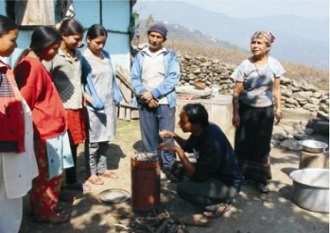Malta will be one of the 22 European countries participating in an EU-funded study on indoor pollution in schools, which will be conducted by physicians Peter Fsadni and Stephen Montefort, who is a member of the steering committee of the International Study of Asthma and Allergies in Childhood (Isaac).
According to an assessment of the Scientific Committee on Health and Environmental Risks (SCHER) – one of three independent non-food scientific committees that advise the European Commission on matters of consumer safety, public health and the environment – information is lacking on possible health effects (such as cancer or reproductive effects) of long-term exposure to many chemicals present in indoor air.
Indoor exposure to air pollutants may occur in both private and public indoor environments such as homes, offices, schools and transport systems.
Some indoor air pollutants come from the outside, but most are released inside the building, for example when cleaning or when burning fuel for cooking and heating. Furniture and construction materials can also emit pollutants. Dampness and lack of ventilation may further increase indoor air pollution.
Because indoor air can contain a mixture of many different pollutants, it is very difficult to assess the associated risks to health. Moreover, there is no such thing as a “typical indoor environment”.
The assessment published by SCHER considers how health risks of indoor air pollutants are currently evaluated and how they should be assessed in the future, taking into account simultaneous exposure to multiple pollutants and particularly vulnerable groups of population such as children, pregnant women and elderly people.
The data available for risk assessment of indoor air pollution is scarce and often insufficient. Information is available on the concentrations in indoor air of some well-known pollutants but is lacking for others whose effects are unclear. Measurements of outdoor air quality cannot be extrapolated to predict the concentrations in buildings.
Monitoring of indicators other than concentrations may be helpful, for instance ventilation rates, general cleanliness, and signs of dampness. The development of health-based guideline values is recommended for key pollutants.
Research is needed to identify the main sources of indoor pollutants, including in damp and water-damaged buildings. In addition, it is necessary to investigate how people are exposed to pollutants in indoor air and how the exposure levels could be measured or estimated using computer models.
There is a need for research on the health effects of mixtures of pollutants and of less well known indoor air pollutants such as microbes.
The SCHER assessment had said that the contribution of indoor air pollutants to childhood respiratory diseases, as well as the exposure-response relationships, especially in vulnerable groups, should also be investigated further.
Factors that determine indoor air quality
• Radon, a gas that occurs naturally in soil and rock in some regions and that can get inside buildings by diffusing through the soil. Radon occurs naturally in parts of Europe. It can get inside buildings and may lead to lung cancer;
• suspended particles in the air can cause harmful effects on health, particularly on the respiratory system, while microbes, such as moulds and viruses, can contribute to the
development of asthma and allergies.
• pets and pests such as dust mites, cockroaches, and mice, are important indoor sources of allergens, and low humidity causes eye irritation, dryness of the skin and the nose, and rashes;
• high humidity fosters the growth of moulds and dust mites;
• and insufficient ventilation is one of the most important factors in poor indoor air quality and may affect health and work performance. Indoor temperatures that are too high or too low are unpleasant and can be unhealthy.
http://www.independent.com.mt/news.asp?newsitemid=109270



